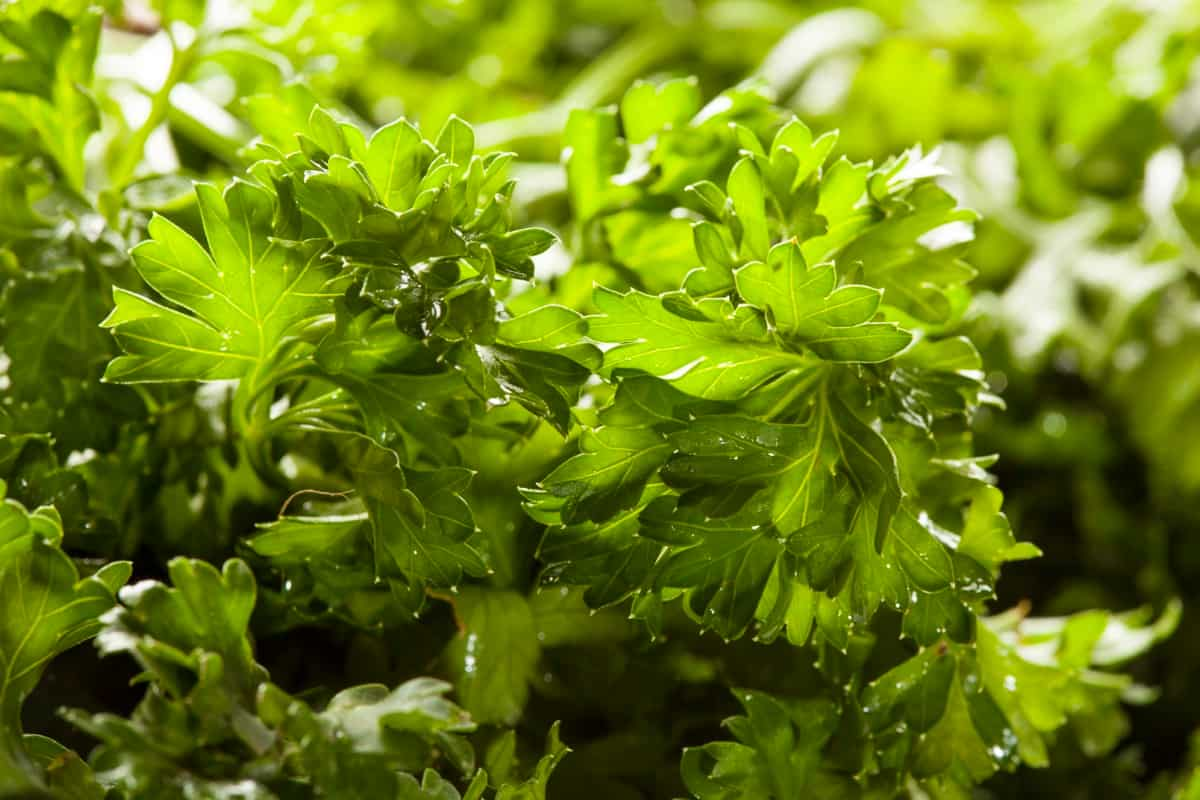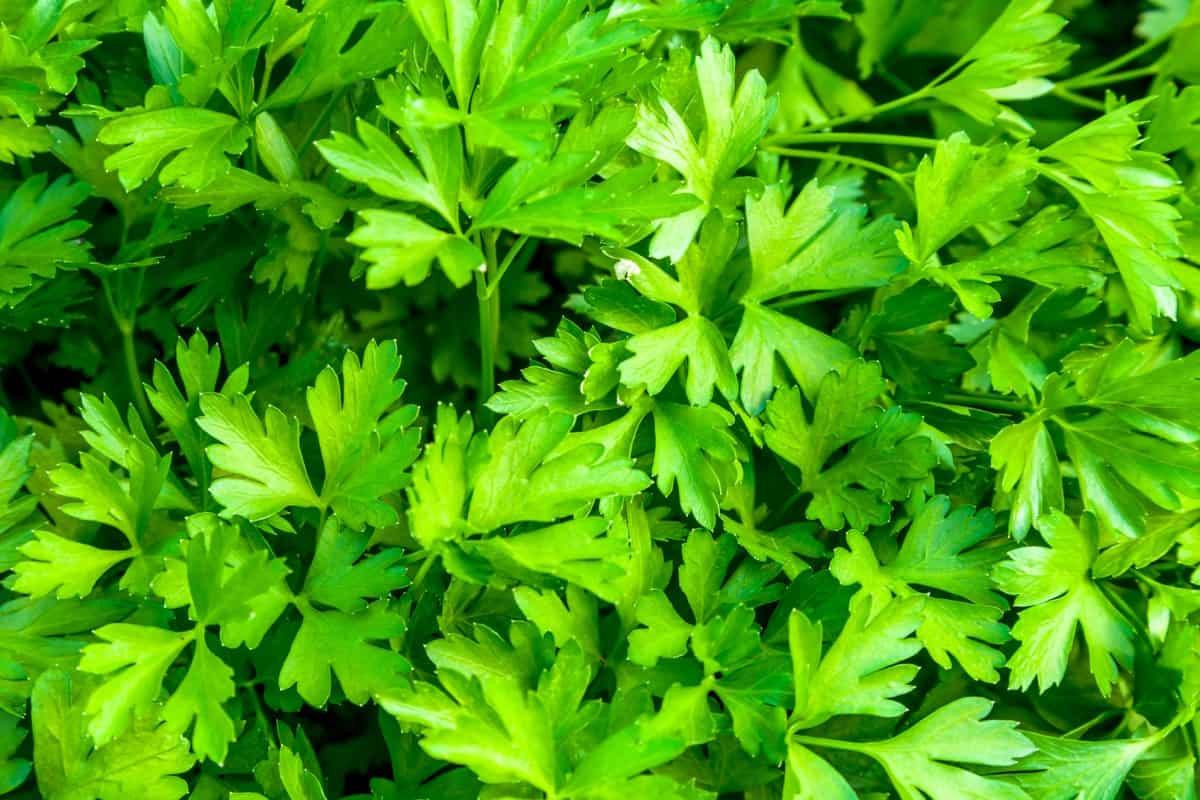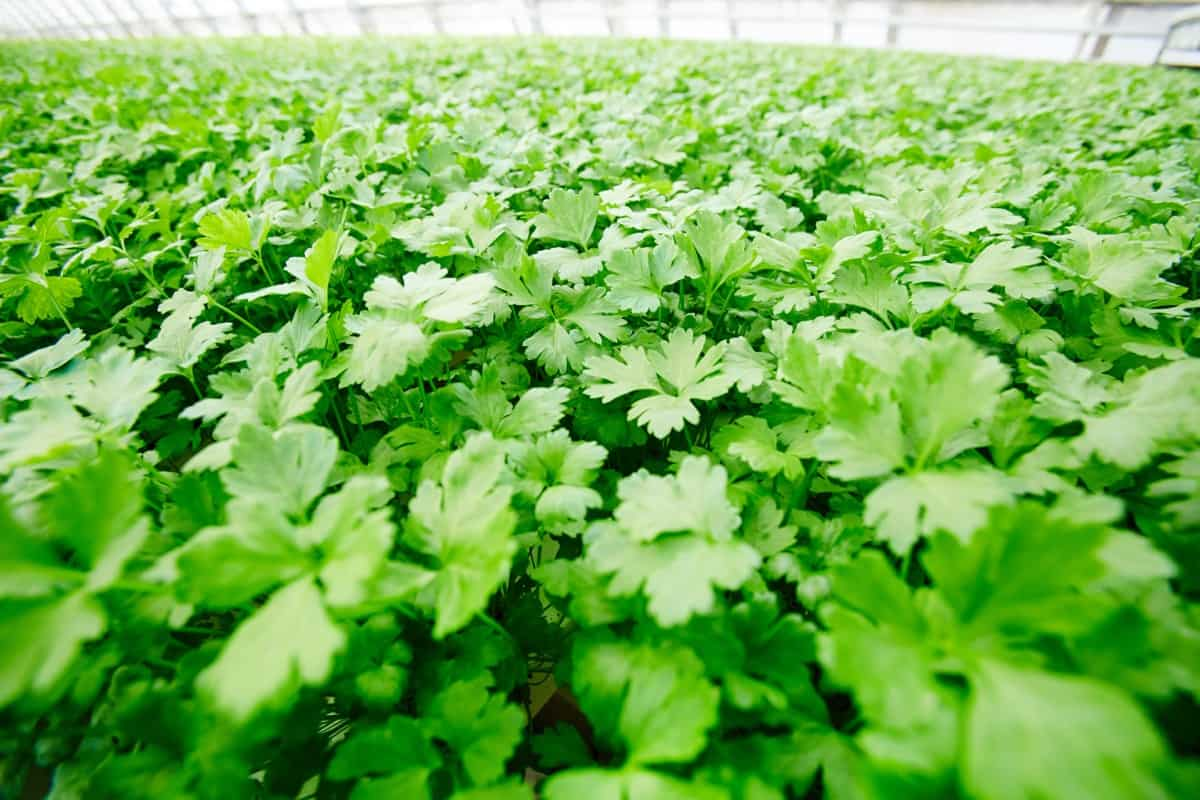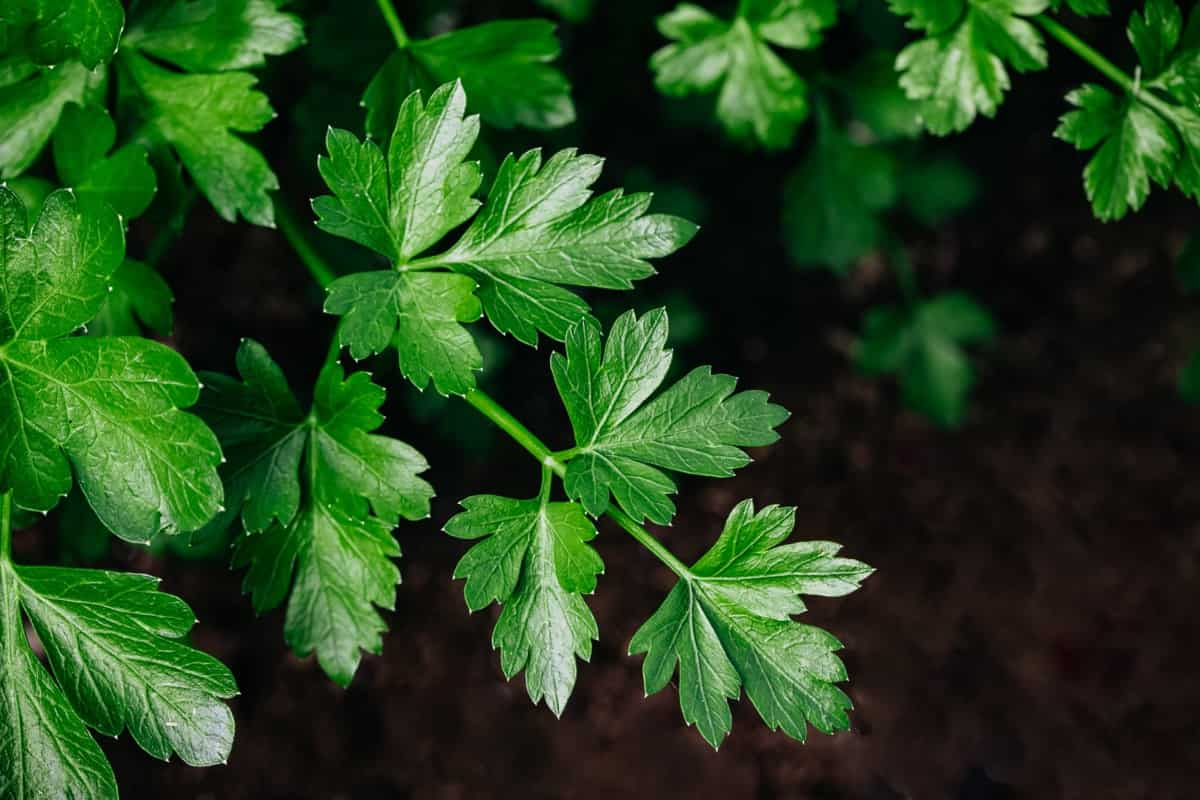Growing and caring for organic Parsley can be a rewarding experience. Not only does it add flavor and freshness to your dishes, but it also offers numerous health benefits. Following the planting instructions and providing proper care, you can have a bountiful harvest of this versatile herb. Whether you grow Parsley in containers or in your garden, remember that it thrives in well-drained soil with plenty of sunlight.

Once your Parsley plants are established, ensure adequate space for them to spread out. Regularly trim the outer leaves to encourage new growth and prevent bolting. Growing organic Parsley requires patience, attention to detail, and a love for fresh herbs. With proper care, you’ll soon have an abundant supply of flavorful green goodness right at your fingertips.
How to Grow and Care for Organic Parsley
Organic Soil Preparation for Thriving Parsley Plants
When growing organic Parsley, the first step is to ensure you have the right soil conditions. Start by choosing a well-draining soil that is rich in organic matter. This will help retain moisture while preventing waterlogged roots. Before planting your Parsley seeds or seedlings, remove any weeds or debris from the area.
Weeds compete with your Parsley plants for nutrients and can hinder their growth. Creating a clean bed where your Parsley can flourish without competition is important. Next, loosen up the soil using a garden fork or tiller. This will help improve air circulation and root penetration. Be gentle when working with the soil to avoid damaging any existing roots.
Once you’ve prepared the bed, it’s time to add some additional organic fertilizer if needed. Parsley prefers slightly acidic soil with a pH range between 6 and 7. You can adjust your pH levels using natural amendments such as sulfur or lime if your pH levels are too high or low. Mulch around your Parsley plants once they are established. Mulching helps conserve moisture in the soil, suppresses weed growth, and regulates temperature fluctuations.
In case you missed it: How to Grow and Care for Organic Angelica: Planting Instructions

Step-by-step Guide to Planting and Growing Organic Parsley at Home
Planting and growing organic Parsley at home is a rewarding endeavor that allows you to enjoy the fresh flavor of this versatile herb right from your garden. Parsley thrives in full sun, so select an area in your garden that receives at least six hours of direct sunlight daily. Organic Parsley prefers well-drained soil with plenty of organic matter.
Before planting, amend the soil with manure to provide essential nutrients. Parsley can be started from seeds or transplants, but starting from seed is more cost-effective. Plant the seeds about ¼ inch deep and 8-10 inches apart. Keep the soil moist but not waterlogged. Use a watering can or gentle sprinkler to avoid disturbing the delicate young plants.
Once the seedlings emerge, thin them out, leaving only one plant every 6-8 inches for optimal growth. Apply organic mulch around your Parsley plants to help retain moisture and suppress weeds. Avoid over-fertilizing Parsley, leading to weak growth and reduced flavor intensity. A light application of organic fertilizer once every few weeks should be sufficient.
Propagation of Organic Parsley
The most common method is to sow the seeds directly into the soil or containers. Ensure the soil is well-draining and enriched with organic matter such as compost. Before planting, soak the Parsley seeds in water for a few hours to improve germination rates. Then, scatter them on the prepared soil and cover them with compost or vermiculite.
Keep the soil moist during germination, which usually takes 2-3 weeks. Another way to propagate Parsley is through division. This involves carefully digging up an established plant and separating it into smaller sections with roots attached. Replant these divisions in fresh soil and water thoroughly.
How to Grow Parsley From Store Bought
Growing Parsley from store-bought is easy and convenient for starting your organic Parsley garden. First, choose a healthy bunch of Parsley from the grocery store or farmer’s market. Look for vibrant green leaves without any signs of wilting or yellowing. Next, remove the lower leaves from the stems, leaving about 2-3 inches at the top. This will allow new growth to emerge. Fill a small pot with well-draining organic soil and make a hole in the center using your finger or a pencil.
In case you missed it: How to Grow Parsley from Seed: A Detailed Guide to Planting to Harvest

Insert the Parsley stem into the hole and press down gently to secure it in place. Ensure only the upper part of the stem with leaves is above ground level. Water thoroughly, but avoid overwatering as it can lead to root rot. Place your potted Parsley in a sunny location where it can receive at least 6 hours of sunlight daily. Keep an eye on your newly planted Parsley and water whenever the soil is drying. Within a few weeks, you should start seeing new growth emerging from the center of each stem.
Growing Organic Parsley in Pots/containers
Growing organic Parsley in pots or containers is a great way to enjoy fresh herbs, even with limited space. Plus, it allows you to easily move your plants around for optimal sunlight and protection from harsh weather conditions. First, choose a container 6-8 inches deep with drainage holes at the bottom. This will ensure proper water drainage and prevent root rot.
Fill the container with high-quality organic potting soil, leaving about an inch of space below the rim. Next, sow the Parsley seeds directly into the soil, following the recommended spacing on the seed packet. Place your container where it receives at least six hours of direct sunlight daily. Parsley thrives in full sun but can tolerate partial shade as well. Water your potted Parsley regularly to moisten the soil evenly but not soggy.
Consider using organic fertilizers specifically formulated for herbs or vegetables to encourage healthy growth. Follow package instructions for application rates and timings. Watch for pests such as aphids or whiteflies that can damage your Parsley plants. Use natural pest control methods like insecticidal soap spray or introducing beneficial insects like ladybugs to keep them at bay. Harvesting fresh Parsley leaves is easy when grown in pots or containers. Snip off individual stems from the outer parts of the plant as needed while leaving inner ones intact for continued growth.
Best Organic Fertilizers for Healthy Parsley Growth
When growing healthy and vibrant Parsley plants, using the right organic fertilizers can make all the difference. Organic fertilizers provide essential nutrients to your Parsley plants without harmful chemicals or synthetic additives. Compost is a nutrient-rich soil amendment that provides a balanced blend of macronutrients and micronutrients necessary for healthy plant growth.
In case you missed it: 17 Common Parsley Plant Problems: How to Fix Them, Solutions, and Treatment

It improves soil structure, retains moisture, and enhances nutrient availability. Fish emulsion is made from waste and contains high nitrogen, phosphorus, and trace minerals. It promotes strong root development and lush foliage in Parsley plants. Worm castings are rich in nutrients like nitrogen, phosphorus, potassium, calcium, magnesium, and trace minerals.
They improve soil fertility and enhance overall plant health. Bone meal is a slow-release fertilizer made from finely ground animal bones rich in phosphorus, calcium, magnesium, and other minerals. It supports strong root development, blooming, and fruiting in Parsley plants. Remember to follow package instructions when applying these organic fertilizers to ensure proper dosages for your specific variety of Parsley.
Protecting Parsley From Pests and Diseases: Natural and Organic Solutions
With its delicate leaves and vibrant green color, Parsley is a favorite herb in many kitchens. But just like any other plant, Parsley is not immune to pests and diseases that can hinder its growth and health. Fortunately, natural and organic solutions are available to protect your Parsley from these unwanted invaders. One common pest that affects Parsley is aphids. These tiny insects feed on the sap, causing stunted growth and yellowing leaves.
You can naturally introduce beneficial insects like ladybugs or lacewings into your garden to combat aphids. These predators will feast on the aphids and help control their population. Another pesky pest that plagues Parsley plants is the caterpillar. Caterpillars chew through the leaves of the plant, leaving behind unsightly holes.
To discourage caterpillars from feasting on your Parsley, try planting companion plants such as marigolds or dill nearby. The strong scent of these plants acts as a deterrent for caterpillars. Fungal diseases like powdery mildew can also be a problem for Parsley growers. This white powdery substance covers the leaves of infected plants and inhibits their ability to photosynthesize effectively. One organic solution to prevent powdery mildew is ensuring proper air circulation around your plants by spacing them apart.
Watering Techniques for Organic Parsley Cultivation
It’s important to note that Parsley prefers consistently moist soil but dislikes waterlogged conditions. Monitor the moisture level by sticking your finger about an inch into the soil to prevent overwatering. If it feels dry, it’s time to water. When watering, focus on the base of the plant rather than overhead irrigation. This helps avoid wetting the foliage excessively and reduces the risk of fungal diseases. Use a gentle stream or a watering can with a narrow spout to target the root zone precisely.
In case you missed it: Best Fertilizer for Parsley: Organic, Homemade, Liquid, NPK, and Compost Manure

Another useful technique is mulching around your Parsley plants. Apply organic materials such as straw or shredded leaves on top of the soil to retain moisture and suppress weed growth. Mulch also acts as insulation during hot weather, preventing rapid evaporation. During periods of intense heat, you may need to increase the watering frequency but reduce each session’s duration. This prevents water runoff and ensures thorough penetration into deeper layers of soil where roots grow.
Organic Companion Plants for Improved Parsley Growth
Regarding Parsley, several companion plants can help improve its growth and keep pests at bay. One such companion plant for Parsley is tomatoes. These juicy red fruits add beauty to your garden and deter pests like aphids and hornworms, which often attack Parsley leaves. The strong scent of the tomato plant helps repel these unwanted visitors, allowing your Parsley to flourish. Another beneficial companion plant for Parsley is chives.
Chives have natural insect-repelling properties and can ward off pests like carrot rust flies and Japanese beetles, which can cause damage to your precious herb garden. Consider marigolds if you’re looking for an attractive flowering companion plant for your Parsley. These vibrant flowers brighten the garden and repel nematodes – microscopic worms that can harm the roots of many plants, including Parsley.
Other good companions for growing organic Parsley include basil, dill, and nasturtiums. Basil acts as a natural pest repellent while adding flavor to your meals; dill attracts beneficial insects like ladybugs who prey on aphids; and nasturtiums serve as trap crops by attracting harmful insects away from your beloved herb.
Parsley soil requirements
Parsley, a versatile herb that adds flavor to countless dishes, requires specific soil conditions to thrive. Whether you’re growing Parsley in your garden or pots on your patio, it’s important to understand the soil requirements for this aromatic plant. First and foremost, Parsley prefers well-draining soil. The soil should not retain excessive moisture, as waterlogged roots can lead to rot and other problems.
Additionally, Parsley thrives in fertile soil rich in nutrients. Before planting Parsley seeds or seedlings, consider adding organic fertilizers like compost or worm castings to enrich the soil. These natural amendments provide essential nutrients for healthy growth and robust flavor. Another crucial aspect of Parsley’s soil requirements is pH level.
In case you missed it: How to Grow and Care for Organic Cress: Planting Instructions

Parsley prefers slightly acidic to neutral soils with a pH range between 6.0 and 7.0. Parsley appreciates loose and friable soil texture that allows its delicate roots to spread easily and access nutrients efficiently. If your soil tends to be compacted or heavy, consider incorporating sand or perlite into the mix for improved drainage and aeration.
How to grow Parsley indoors in water
Growing Parsley indoors in water is a convenient and fun way to enjoy fresh herbs year-round. Select healthy Parsley stems from an established plant to start growing Parsley in water. Ensure the stems have plenty of leaves and are free from any signs of disease or damage. Then, fill a glass or jar with clean tap water and place the stems in the container, submerging at least half each stem. Parsley can be grown hydroponically using water, but adding some liquid organic fertilizer will provide essential nutrients for optimal growth.
Place your Parsley near a sunny window so that it receives at least six hours of direct sunlight each day. Remember to change the water every few days to prevent stagnation and promote healthy root development. In just two weeks, you’ll notice roots growing from the bottom of the stems. This indicates that your Parsley is thriving and ready for harvest. Snip off what you need when cooking and watch as new leaves sprout from the remaining stem.
Conclusion
Growing and caring for organic Parsley can be a rewarding experience. Remember that Parsley requires well-drained soil, ample sunlight, and regular watering to thrive. Starting from seeds or seedlings is your choice, but ensure they are planted at the right depth and given enough space to grow. Watch for pests or diseases affecting your Parsley plants throughout their growth cycle. Regularly inspect the leaves and take necessary measures to protect them if needed.
- Gardening Techniques in Planting Vegetables
- Where to Place Indoor Plants in Your Home
- How to Grow Tomatoes Organically at Home: A Comprehensive Guide
- Organic Gardening on a Budget: Low-Cost Methods and Materials
- Gongura Seed Germination and Planting Methods
- Cabbage Seed Germination and Selection
- Broccoli Seed Germination and Selection
- Asparagus Seed Germination and Variety Selection
- Seasonal Flower Gardening: Best Practices for Spring, Summer, Fall, and Winter
- How to Grow Hibiscus from Flower
- Plantation Ideas for Home Decoration: A Beginners Guide
- Flower Garden Designs and Layouts for Beginners
- Planting and Spacing Techniques in Papaya: A Beginner’s Guide
- Growing Gold: Essential Techniques for Planting Pineapples
- How to Make Kalanchoe Plant Bushy: Home Remedies and Solutions
- 11 Reasons Why Your Gardenia is Not Blooming: Home Remedies and Solutions
- Eco Elegance: The Guide to Designing a Drought-Tolerant Landscape
- Gardening on a Slope: Strategies for Hillside Landscaping
- Nourish and Flourish: Top Organic Mulches for Thriving House Plants
- Everything You Want to Know about Indian Mogra Flower: Discover Uses and Growing
- Green Thumb Success: Expert Tips for Cultivating Greenhouse Pumpkins All Year Round
- Maximize Growth & Flavor: The Ultimate Guide to Companion Planting in Herb Gardens
- How to Control Rhododendron Problems Naturally: Home Remedies and Organic Ways to Fix Them
- Natural Magic: The Remarkable Benefits of Cinnamon for Plants
- Best Steps to Revive Dying Tulip with Natural and Organic Treatment
- 10 Reasons Why Your Angel Trumpet is Not Blooming: Remedies and Treatment
- How to Fix Periwinkle Leaf and Flower-Related Problems: Natural Remedies and Solutions
- How to Fix Zinnias Leaf and Flower Problems: Discover Natural and Home Remedies
- Organic Steps to Induce Lemon Tree Flowers: A Comprehensive Guide
- Bloom Booster: Crafting the Perfect Homemade Bougainvillea Fertilizer
- Optimizing Growth: A Guide to Applying NPK Fertilizer for Potted Plants
- 10 Best Homemade Fertilizers for Rubber Plant: DIY Recipes and Application Method
- How to Boost Female Pumpkin Flowers: Effective Steps for More Flowers and High Yields
- Transform Your Indoor Garden: Top Benefits of Pink Salt for Houseplants
- 10 Best Homemade Fertilizers for Peacock Plants (Calathea): Easy DIY Guide
- Unlock Blooms: 9 Reasons Why Your Potted Chrysanthemum is Not Blooming